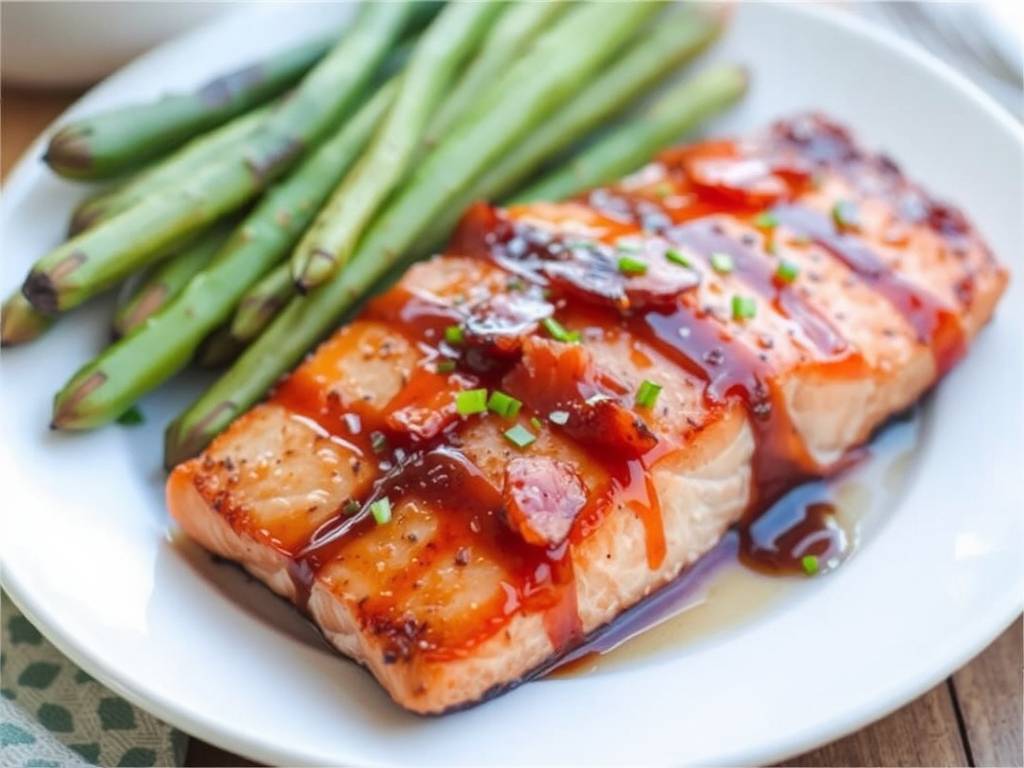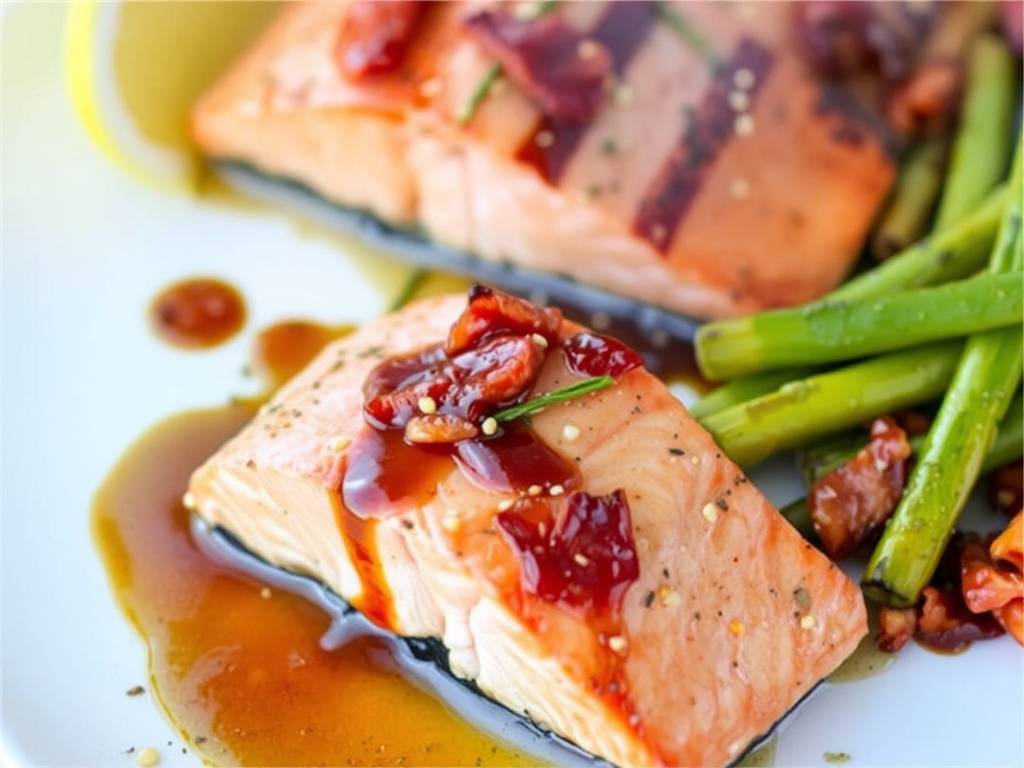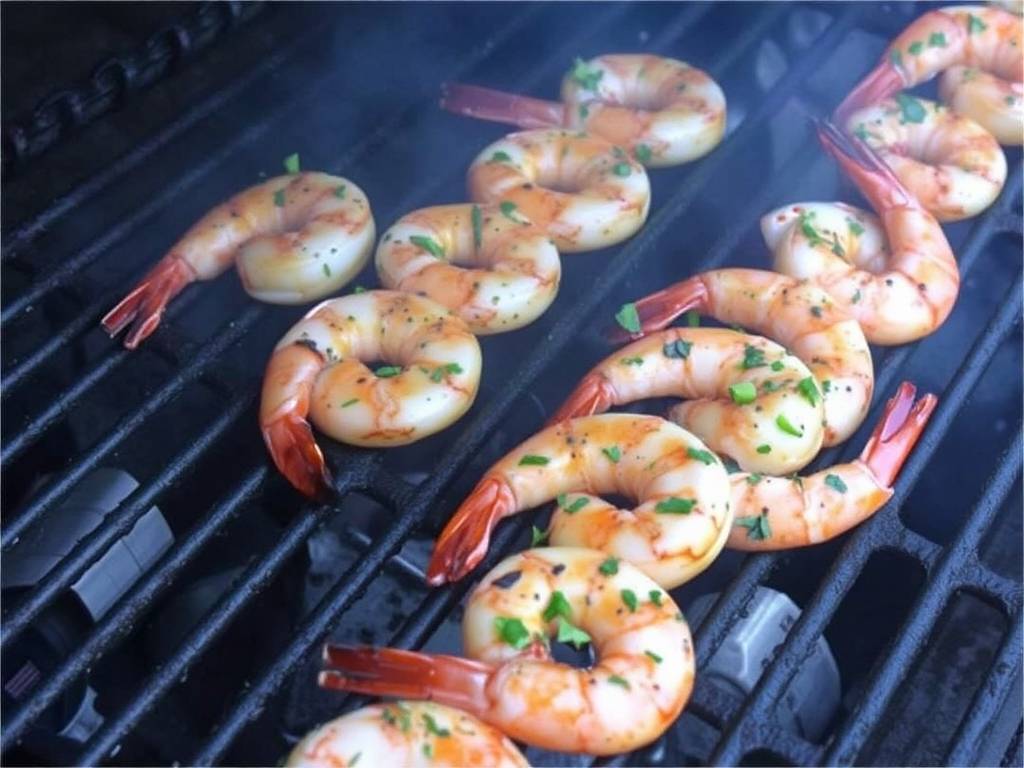The Ultimate Guide to Grilling Maple Glazed Bacon-Wrapped Salmon
There is something undeniably magical about the combination of sweet, savory, and smoky flavors. When these elements converge on a single, perfectly grilled piece of fish, the result is nothing short of spectacular. Enter Maple Glazed Bacon-Wrapped Salmon: a dish that sounds decadent, looks impressive, and tastes like a symphony of complementary flavors. It’s a celebration of texture and taste, where the rich, oily flesh of the salmon is enhanced by the salty, crisp embrace of bacon and the deep, caramelized sweetness of maple syrup.
This isn't just another recipe; it's a journey into mastering fire, flavor, and technique. Many are intimidated by grilling fish, fearing it will stick or fall apart. But with the right approach, you can create a restaurant-quality masterpiece right in your own backyard. This guide will walk you through every step, from selecting the finest ingredients to achieving that perfect, flaky interior and beautifully charred exterior.

The Foundation: Selecting Your Ingredients
The success of this dish hinges on the quality of its three core components. Compromising here will compromise the final result.
-
The Salmon: Opt for fresh, center-cut salmon fillets with the skin on. The skin is crucial—it acts as a protective barrier between the delicate flesh and the intense heat of the grill, and it provides a structural base for the bacon wrap. Look for fillets that are about 1 to 1.5 inches thick, ideally of similar size for even cooking. The flesh should be bright, firm, and have a fresh, oceanic smell. Avoid any fillets with gaps or discoloration. King or Sockeye salmon are excellent choices for their rich flavor and firm texture.
-
The Bacon: Standard thin-sliced bacon will burn before the salmon is cooked. You need a thicker-cut bacon. Look for applewood-smoked or maple-smoked bacon to echo the glaze's flavors. The slices should be long enough to wrap around the thickness of the salmon fillet at least once, with a slight overlap.
-
The Maple Glaze: Do not use imitation maple syrup. The complexity of 100% pure maple syrup is non-negotiable. Its deep, woody notes are the soul of the glaze. To this, we will add Dijon mustard for a sharp tang, a splash of apple cider vinegar for acidity to cut through the fat, a pinch of smoked paprika for a smoky undertone, and a clove of minced garlic for aromatic depth.

The Preparation: A Ritual of Patience
Proper preparation is 80% of the battle in grilling. Rushing this stage is the most common mistake.
-
Preparing the Salmon: Pat the salmon fillets completely dry with paper towels. This is critical for getting a good sear and helping the glaze adhere. Season both sides liberally with freshly ground black pepper. Do not salt the salmon at this stage. The bacon will provide ample saltiness. If you wish, you can lightly brush the flesh side with a tiny amount of olive oil, but it's not essential due to the salmon's natural oils.
-
Crafting the Glaze: In a small saucepan, combine ½ cup of pure maple syrup, 2 tablespoons of Dijon mustard, 1 tablespoon of apple cider vinegar, 1 teaspoon of smoked paprika, and one minced garlic clove. Whisk together and bring to a gentle simmer over medium heat. Reduce the heat to low and let it cook for 5-7 minutes, stirring occasionally, until it has thickened slightly. It should coat the back of a spoon. Remove from heat and let it cool. Reserve half of the glaze for serving.
-
The Bacon Wrap: Take a slice of thick-cut bacon and, starting at one end, wrap it around the middle of the salmon fillet, "belt-style," ensuring the ends meet or slightly overlap on the skin side. The goal is to have the bacon cover the sides and top of the fillet, protecting the flesh from direct flame. Secure the ends of the bacon with a toothpick, piercing it through the bacon and into the salmon skin. Be careful not to go too deep into the flesh. Repeat for all fillets.
The Fire: Setting Up for Success
Grilling is about controlling heat, not battling it. For this recipe, we use a two-zone fire setup. This means you have a direct heat zone for searing and an indirect heat zone for gentle, controlled cooking.
-
For a Charcoal Grill: Pile the lit charcoal on one side of the grill, creating a hot zone. The other side, with no coals underneath, is your indirect zone. Your target temperature for the indirect zone should be around 375°F to 400°F (190°C to 205°C).
-
For a Gas Grill: Preheat your grill with all burners on high. Then, turn off one or more burners to create an indirect zone. You should have a hot, direct zone and a cooler, indirect zone. Adjust the active burners to maintain the 375°F to 400°F range over the indirect side.
-
Clean and Oiled Grates: Just before cooking, ensure your grates are meticulously clean. Then, using a pair of long-handled tongs and a folded paper towel dipped in a high-heat oil (like canola or avocado oil), carefully oil the grates. This is your final defense against sticking.
The Performance: The Art of the Grill
Now for the main event. Have your prepared salmon, glaze, and a timer ready.
-
Initial Sear: Place the salmon fillets, skin-side down, directly over the heat. The bacon should be on the top and sides, not touching the grates. Grill for 2-3 minutes, with the lid open. This initial blast of heat will render some of the bacon fat, create grill marks, and most importantly, crisp and set the skin, which will make it much less likely to stick.
-
The Indirect Cook: After the initial sear, carefully move the fillets to the indirect heat zone, still skin-side down. Close the lid. This is where the magic of convection cooking happens. The salmon will cook gently and evenly, the bacon will continue to crisp, and the smoke will infuse the fish. Let them cook for 10-15 minutes. The cooking time will depend on the thickness of your fillets and the exact grill temperature.
-
Applying the Glaze: About 5-7 minutes into the indirect cooking time (when the bacon is starting to look cooked but not yet crisp), it's time for the first glaze. Carefully brush a generous layer of the maple glaze over the top and sides of the fillets, avoiding the skin. Close the lid. Repeat this glazing process once or twice more during the remaining cooking time. This layering builds a beautiful, sticky, caramelized coating.
-
The Final Test for Doneness: Do not flip the salmon. It cooks perfectly from the skin side. The best way to check for doneness is to use an instant-read thermometer. Insert it into the thickest part of the fillet. You are aiming for an internal temperature of 125°F to 130°F (52°C to 54°C) for medium. The fish will be opaque and flake easily with a fork. The bacon should be fully cooked and crisp at the edges. If the bacon isn't crisp enough but the salmon is done, you can carefully move the fillets back over direct heat for 30-60 seconds, but watch them like a hawk to prevent burning the glaze.
The Grand Finale: Serving Your Masterpiece
Once off the grill, let the salmon rest for 3-5 minutes. This allows the juices to redistribute. Carefully remove the toothpicks.
Serve the fillets skin-side down on a warm plate. Drizzle with the reserved, unused maple glaze. The contrast between the hot, glazed fish and the cool, liquid syrup is delightful.
Serving Suggestions:
- For a Fresh Contrast: A simple arugula salad with a lemon vinaigrette cuts through the richness beautifully.
- For Earthy Comfort: Garlic mashed potatoes or roasted sweet potatoes are a perfect canvas for the flavorful salmon.
- For a Light Touch: Grilled asparagus or zucchini make excellent, simple sides.
Troubleshooting Common Issues:
- Sticking Fish: This almost always traces back to dirty or unoiled grates, or moving the fish too soon. Ensure that initial skin-side sear is successful before attempting to move it.
- Burnt Glaze: The sugar in maple syrup burns easily. If you see the glaze blackening, move the fish to a cooler part of the grill immediately. This is why we do most of the glazing during indirect cooking.
- Undercooked Bacon/Raw Salmon: This is usually a result of the grill being too hot, causing the outside to cook too fast before the inside is done. Trust the two-zone method and the indirect heat. If this happens, move to indirect heat, close the lid, and be patient.
Grilling Maple Glazed Bacon-Wrapped Salmon is an exercise in balancing powerful flavors and mastering gentle heat. It’s a dish that commands attention and delivers immense satisfaction. With this comprehensive guide, you are equipped not just with a recipe, but with the knowledge and confidence to create a truly unforgettable grilled delicacy. Fire up the grill, and prepare to impress.






发表评论